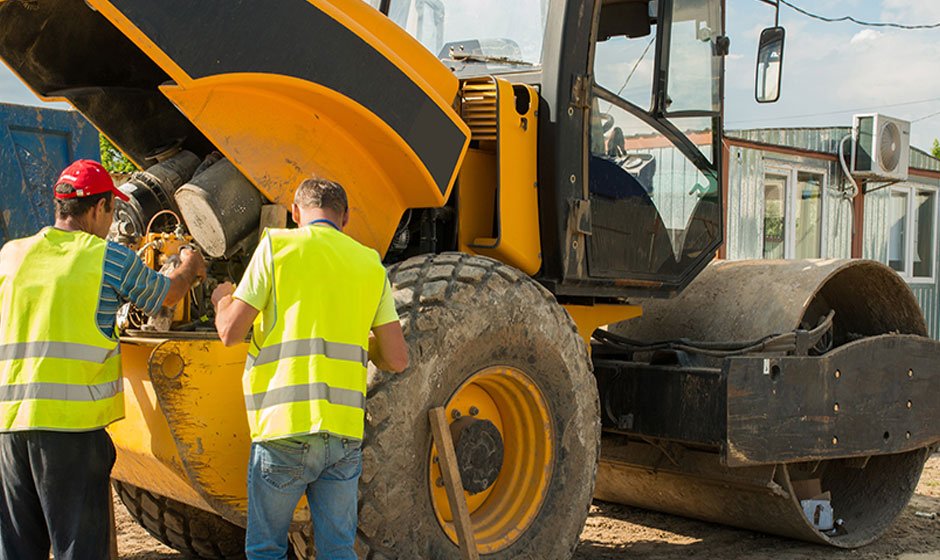Heavy equipment is paramount in the construction, mining, agriculture, and transportation industries. These machines are the backbone of operations, contributing to productivity and overall success. Nevertheless, heavy equipment is not resistant to wear and tear, and there comes a time when the decision to replace it becomes critical. Determining the right time to substitute your heavy equipment is a complex process that implicates evaluating diverse elements. We will delve into the considerations that can guide you in making an informed decision about when to replace your heavy equipment.
Factors to consider When is the right time to replace heavy equipment
1. Equipment Age and Usage:
One of the primary factors influencing the decision to replace heavy equipment is its age and usage. Most manufacturers provide an estimated lifespan for their equipment, considering typical usage and maintenance practices. Once a machine surpasses its expected lifespan, it becomes more prone to breakdowns and costly repairs. However, age isn’t the only determinant. You should also consider the intensity of usage – a machine used for multiple shifts or in harsh conditions might wear out faster than one used sporadically.
2. Maintenance Costs:
Monitoring maintenance costs is a paramount aspect of equipment management. As equipment ages, maintenance requirements often increase, leading to higher costs. If you notice a consistent rise in maintenance expenses and the equipment spends more time in the workshop than on the job site, it might be a sign that replacement is a more cost-effective option in the long run.
3. Technological Advancements:
Technology in the heavy equipment industry is continually evolving. Newer models usually arrive equipped with improved fuel efficiency, advanced safety features, and enhanced productivity capabilities. If your existing equipment lacks these benefits and upgrading would significantly impact your operations, it might be worth considering a replacement. New technology can lead to more streamlined operations, reduced downtime, and increased overall efficiency.
4. Productivity and Downtime:
Downtime is the bane of productivity. If your equipment frequently breaks down, it hampers project timelines, increases labor costs, and affects your bottom line. Regular and prolonged downtime due to equipment failures can indicate that replacement is better than continuing to invest in repairs. While no equipment is entirely immune to breakdowns, a pattern of increasing downtime is a clear signal that replacement should be on your radar.
5. Safety Concerns:
Outdated equipment might need to meet the latest safety standards, putting operators and workers at risk. Safety should always be a top priority, and if your heavy equipment lacks essential safety features or has become a safety liability due to wear and tear, replacement becomes a necessary step to protect your workforce and avoid potential legal issues.
6. Environmental Regulations:
Environmental regulations are becoming increasingly stringent. Newer heavy equipment models often adhere to emission standards and environmental regulations better than older machines. You might face fines or operational restrictions if your existing equipment doesn’t meet these requirements. Replacing older equipment with newer, compliant models can prevent these challenges and contribute to a greener operation.
7. Resale Value:
While the decision to replace your equipment is constantly navigated by its condition and performance, considering its resale value is also essential. Well-maintained equipment tends to have a higher resale value, which can offset the cost of purchasing a new machine. Some companies opt to sell their aging equipment before it incurs substantial maintenance costs and use the proceeds to invest in newer models.
8. Market Conditions:
Market conditions in your industry and the broader economy can impact the timing of replacing your heavy equipment. Economic downturns might usher in reduced workloads, making it challenging to justify the investment in new equipment. On the other hand, during periods of growth, the latest equipment might be necessary to satisfy increased demand.
9. Lifecycle Cost Analysis:
A comprehensive method for deciding whether to replace your heavy equipment is to perform a lifecycle cost study. This analysis considers the equipment’s original cost of acquisition, ongoing costs, maintenance costs, downtime, and resale value during its entire lifecycle. It aids in your evaluation of the genuine cost of ownership and empowers you to decide more wisely in light of any financial repercussions.
10. Equipment Compatibility:
In industries where equipment ought to work together seamlessly, the compatibility of your existing equipment with newer models can influence your decision to replace it. Suppose new equipment offers enhanced compatibility, interoperability, and the potential for increased efficiency within your fleet. In that case, it might make sense to replace older equipment to maintain a cohesive and productive operation.
Deciding when to replace your heavy equipment is a strategic decision that requires a holistic evaluation of various factors. While age and usage are important, they are just one piece of the puzzle. Maintenance costs, technological advancements, productivity, safety concerns, environmental regulations, market conditions, equipment compatibility, and manufacturer’s support are equally crucial. Engaging in thorough analysis and regular expert equipment tuning services will help you determine the optimal time to replace your heavy equipment. Remember that the goal is to maintain operational efficiency, meet safety requirements, and ensure the long-term success of your business.

